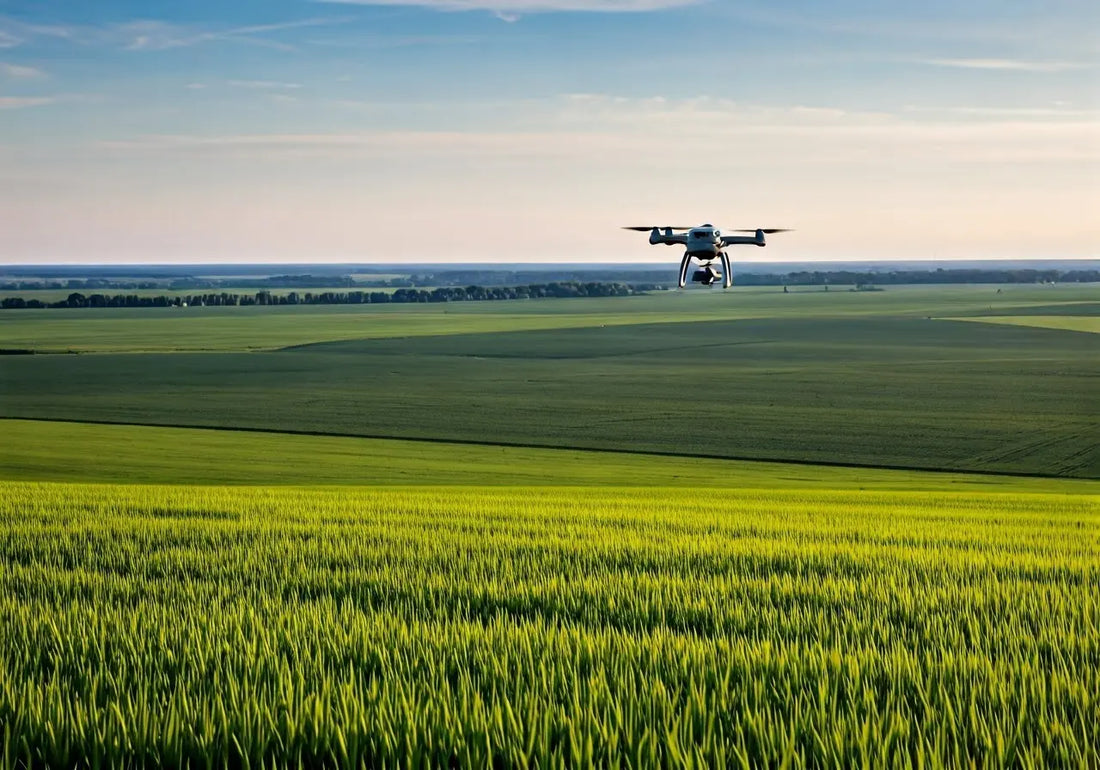
7 Ways Agriculture Drone Market is Revolutionizing Modern Farming
Share
In recent years, the agriculture drone market has soared to new heights, transforming how farmers manage their crops and land. As technology continues to evolve, drones have become an integral part of modern farming, offering innovative solutions to age-old agricultural challenges. In this blog post, we’ll explore the fascinating ways drones are revolutionizing the agriculture industry.
1. Precision Farming for Better Resource Management
Drones allow farmers to employ precision farming techniques, enabling them to use resources such as water and fertilizers more efficiently. By providing real-time data and aerial imagery, drones help in identifying specific areas that require attention, reducing waste, and promoting sustainable practices. With the aid of drones, farmers can monitor crop stress levels with pinpoint accuracy, ensuring that interventions are applied precisely where needed, as discussed in the insights on How Do Agricultural Drones Improve Farming Efficiency?.
The advent of drones in agriculture has redefined how we think about resource management. Unlike traditional farming methods which often involve uniform application of resources across entire fields, drones facilitate a more targeted approach. By leveraging advanced sensor technologies, these flying marvels generate detailed maps that highlight areas of varying productivity. This precision allows farmers to adjust their resource allocation, applying more water or nutrients only to sections that truly need them. Such practices not only enhance productivity but also significantly cut down on wasted inputs, aligning perfectly with sustainable agricultural goals.
2. Crop Monitoring Made Easy
The ability to monitor crops effectively is crucial for farmers. Drones equipped with advanced sensors can gather detailed information about crop health, growth, and potential issues. This information allows farmers to take timely action, preventing crop loss and improving overall yield. By using drones, farmers can capture high-resolution images and multispectral data that reveal subtle changes in plant health which are invisible to the naked eye. This capability enables proactive management techniques that are both effective and efficient.
Traditional crop monitoring methods could be time-consuming and labor-intensive. However, thanks to the integration of drones, these tasks have become significantly more manageable. Agriculture drones transform farming practices by offering a level of detail and accuracy that far surpasses manual inspections. With drones, farmers can automate the scanning of large fields, identifying weak spots, assessing vegetative indices, and even tracking crop maturity stages. This level of data-gathering expedites decision-making, ensuring timely interventions that align harvest goals with environmental and market conditions.
3. Efficient Field Mapping and Surveying
Field mapping and surveying have never been easier, thanks to drones. These flying assistants offer detailed and accurate maps in a fraction of the time traditional methods require. This efficiency enables farmers to plan more effectively and optimize their land use. Drones can quickly generate orthomosaic maps, 3D models, and topographical layouts that allow farmers to understand the intricacies of their terrain. By assessing factors such as slope, elevation, and aspect, farmers can devise better planting schemes, reduce soil erosion, and implement effective resource management strategies.
4. Innovative Irrigation Solutions
Water management is a critical aspect of farming, and drones are at the forefront of providing innovative irrigation solutions. By assessing moisture levels in the soil, drones help farmers in designing efficient irrigation systems that conserve water and enhance crop productivity. Through thermal imaging, drones can identify water-deficient areas, allowing for more precise irrigation. Two fields with the same crop might have vastly different water requirements based on factors like soil compaction or root density. Drones ensure that each parcel receives exactly what it needs, minimizing water wastage and reducing overall irrigation costs.
5. Pest and Disease Control
One of the most challenging aspects of farming is managing pests and diseases. Drones equipped with infrared cameras can detect signs of infestation early on, permitting farmers to take swift action. This proactive approach helps in safeguarding crops and minimizing losses. By capturing infrared imagery, drones can identify crop stress patterns symptomatic of pest infestations or disease outbreaks. With this information, farmers can precisely target and treat affected areas, introducing biological controls or targeted pesticide applications as needed. This not only curtails the spread of pests and diseases but also reduces the reliance on blanket pesticide use.
Once pests or diseases have been identified, drones can assist in targeted applications of treatments, particularly beneficial in large farms where manual application is impractical. Drones can carry and disperse beneficial insects or microbial solutions which are eco-friendly ways to combat pests. This method is not only efficient but also aligns with the growing trend towards organic farming. The use of drones in this manner significantly reduces the quantity of chemical pesticides utilized, contributing to a more sustainable farming environment and ensuring the health of the surrounding ecosystem.
6. Enhancing Harvesting Techniques
Drones are playing an increasingly important role in enhancing harvesting techniques. By providing valuable data and aiding in the assessment of the optimal harvest time, drones ensure that the produce is collected at the peak of ripeness, improving quality and reducing waste. Harvest timing can drastically affect the quality and shelf-life of produce, and drones help pinpoint the precise moment when crops are ready for harvest. This data-driven approach mitigates the risk of premature or delayed harvesting which can lead to losses or reduced quality, thus enhancing the farm’s overall productivity.
7. Boosting Farm Safety and Security
Beyond their practical uses, drones contribute to the safety and security of farms. They can monitor large areas quickly, identifying potential threats such as unauthorized access or animal intrusions, thereby helping farmers take preventive measures to protect their land and livestock. Drones equipped with night vision or thermal cameras operate effectively under low-light conditions, offering an added layer of security. Regular aerial patrols can also deter poaching and theft, ensuring the farm’s productivity and investment are well-protected. The ability of drones to perform these tasks autonomously makes them an invaluable asset in maintaining a secure farm environment.
Security through surveillance is not the only safety benefit drones provide. In emergency situations, drones can quickly assess damage from natural disasters such as floods or fires, providing farmers with live updates that aid in swift response. They act as the farmer’s eyes in the sky, offering intelligence that helps in strategizing recovery actions safely and effectively. The agility and speed of drones are incomparable when it comes to covering vast areas, ensuring that no facet of farm security is overlooked.

